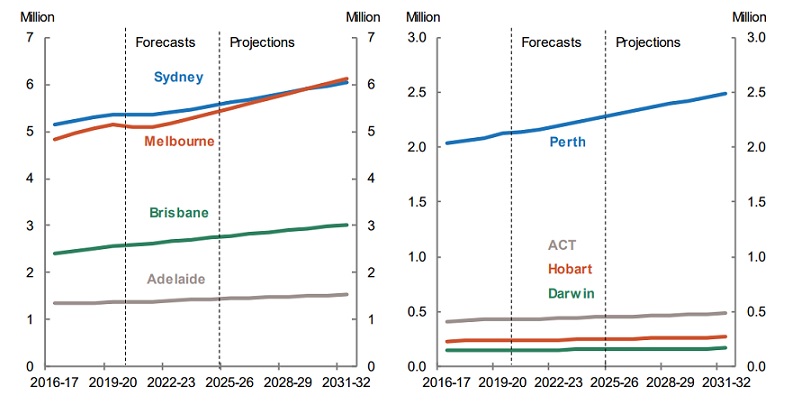Melbourne will become the nation’s fastest-growing city next year and will overtake Sydney to become the biggest capital in Australia by 2030, according to the federal government.
The Centre for Population’s latest projections show population growth will take a while to heat up, with 2022 set for just 0.3 per cent growth, hampered by net overseas migration of 41,000 outgoing.
This was up from a net outflow of 100,000 last year, marking the first time population net overseas migration had dropped in Australia since World War II.
Federal minister for housing Michael Sukkar said capital cities were forecast to return to higher growth rates than the rest of their states from 2022‑2023 as overseas migration returned.
“While the outlook remains uncertain due to the unpredictability of Covid, population growth is projected to increase to around 1.4 per cent by 2024-2025 as overseas migration recovers,” Sukkar said.
“Melbourne is projected to be the fastest-growing capital city from 2023‑2024 on, overtaking Sydney to become the nation’s largest city in 2029‑2030 at just over 5.9 million people.”
Population predictions for Australia

^Source: Australian Government 2021 Population Statement
This is in contrast to internal migration during the pandemic which saw Queensland take the lion’s share of new residents, followed by South Australia, with people moving from Melbourne and Sydney in the wake of lockdowns.
Australia’s population is expected to grow from 25.7 million in 2020-2021 to 29.3 million by 2031-2032. This is a drop of 1.5 million, or 4.9 per cent, on pre-pandemic predictions.
Lower fertility and international migration will have the biggest impact on population growth, which is predicted to increase from 0.3 per cent to 1.4 per cent in 2024-2025 before slowing to 1.2 per cent in 10 years.
While population growth was non-existent during 2020-2021 it did little to curb the housing market, which reached new highs.
Home values have increased 22.1 per cent in the past 12 months, with the highest number of approvals in November in Victoria for apartments and homes.
Australian Bureau of Statistics director of construction statistics Daniel Rossi said the latest data showed nationally approvals for apartments increased 9.7 per cent while house approvals levelled off at 1.4 per cent.
“The series has been at historically elevated levels over the past year, largely driven by government stimulus and record low interest rates,” Rossi said.
“While private house approvals are no longer at record highs, the November result remains 25.8 per cent higher than the pre-pandemic level in November, 2019, indicating on-going strength in the detached housing market.”
However, the housing boom is expected to settle in the coming years, constrained by affordability along with potential inflation and interest rate changes.